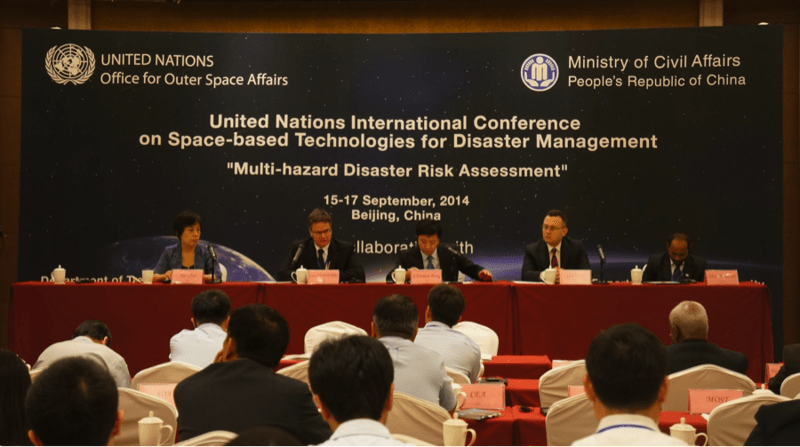Despite advances in hazard monitoring and early warning and systems, disasters still cause significant disruptions to social, economic, and environmental systems, and recovery can take many years. The 2014 United Nations International Conference on Space-based Technologies for Disaster Management provided an opportunity for stakeholders to learn more about using space-based information to identify, assess, monitor, and respond to hazard risks in ways that could potentially lessen their impacts and shorten recovery periods.
Conference participants also explored using multi-hazard disaster risk assessment to better understand risks, mitigate impacts, and prepare for hazards by effectively integrating space-based technology into long-term disaster management and planning processes. As a valued partner of the UN system, Pacific Disaster Center (PDC) was invited to chair a plenary session focusing on space-based information resources for hazard identification and risk assessment. PDC Deputy Executive Director Chris Chiesa provided participants with a presentation featuring PDC’s DisasterAWARE platform, which was identified by the Head of the UN-SPIDER Beijing Office Shirish Ravan as one of the “Best Practices” for disaster risk monitoring and assessment. Chiesa also shared experiences and insights from deploying the platform in the Asia-Pacific region.
This was the fourth annual conference, co-organized by the UN-Platform for Space-based Information for Disaster Management and Emergency Response (UN-SPIDER) under the UN Office for Outer Space Affairs (UNOOSA), and the Ministry of Civil Affairs of the People’s Republic of China. The event was held September 15-17 in Beijing, China and brought together over 110 participants from 36 countries representing 56 organizations.
For more information on this event:
• Visit the event’s conference page and view presentations,
• Take a look at the conference booklet,
• View an event summary by UN-SPIDER, and
• Read an article by the China’s Ministry of Environmental Protection.

